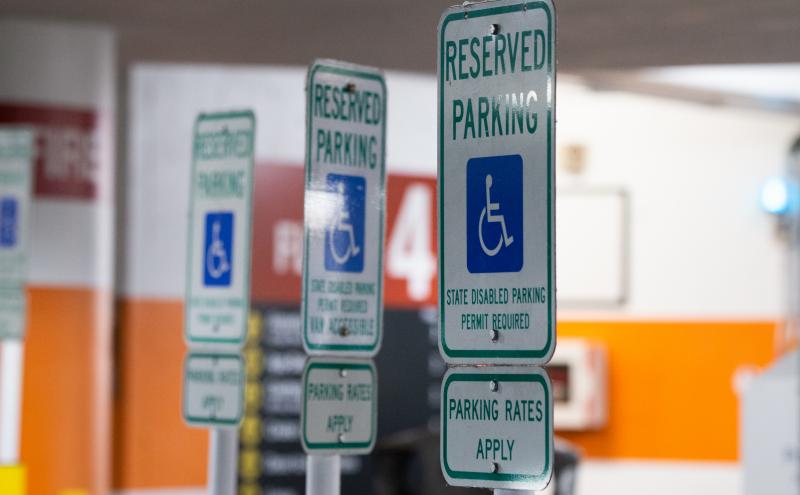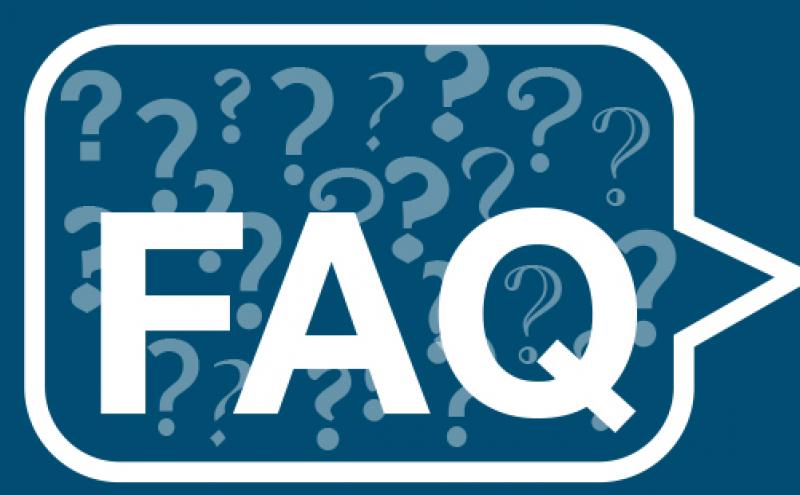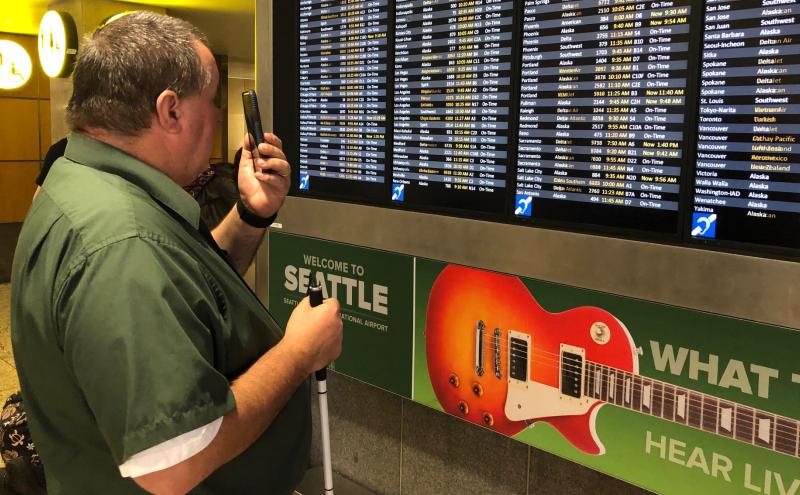
We all have tools that help us get through our every day lives more efficiently and easily. Like grocery shopping lists on your phone and step-by-step GPS directions. We get so used to them, we wonder how we ever managed without them.
For people with vision impairment, important tools could be a cane or an assistive dog. One frequent traveler, Larry Watkinson, added a system called Aira to his toolkit to help him navigate Seattle-Tacoma International Airport (SEA) from the curb, through the terminal, to his gate. Watkinson has a vision impairment and works with the Washington State Department of Transportation (WSDOT) to manage ADA compliance at WSDOT facilities and on the website.
On the 29th anniversary of the Americans with Disabilities Act, we tagged along with Larry, his wife Kathy who has low vision but can navigate the airport without assistive devices, and his service dog Huey to get their perspectives on the experience of navigating the airport.
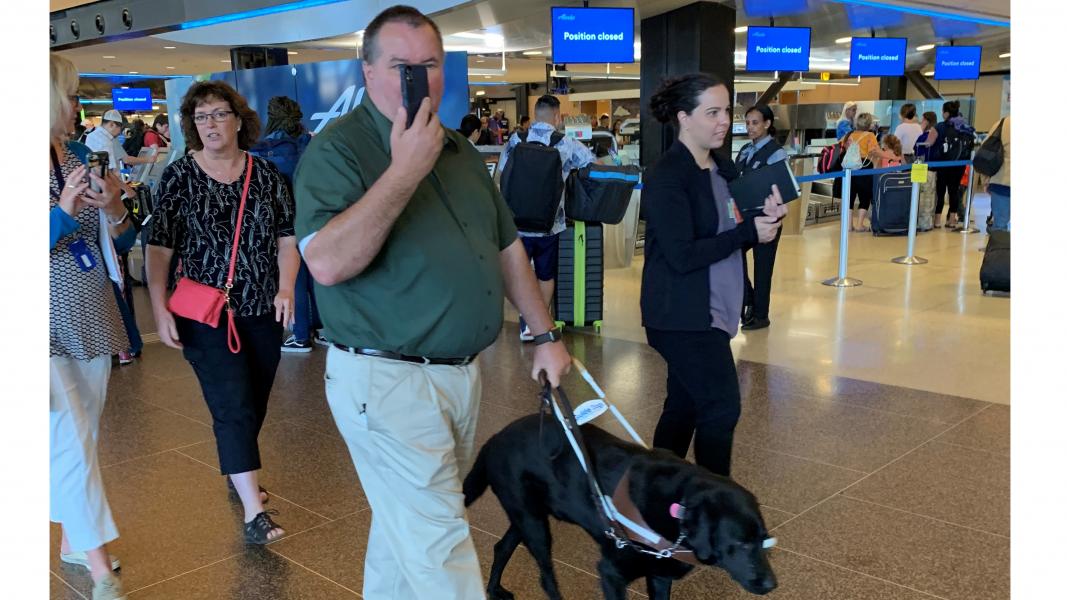
Free Aira Zone at SEA
The Port of Seattle launched the use of assistive technology Aira at the airport in March 2018. On our walk, Larry demonstrated the use of Aira and how it helps him navigate the airport.
To use the service, passengers only need a smartphone with a camera and the free Aira app. Once connected via SEA’s free Wi-Fi, Aira connects a person with vision impairment to a professionally trained agent who looks at the environment through the phone’s camera and provides live narration as someone moves throughout the terminal. The Aira agent can provide rich visuals descriptions whether navigating, reading menus, or locating luggage.
Generally, using Aira minutes costs users about $1 per minute. However, the use of Aira minutes at SEA are paid by the Port of Seattle, so users pay no costs when using the system from the garage to the main terminal, and within all concourses and satellites. Aira users should bring their own camera-enabled cell phone and download the app for use at the airport.
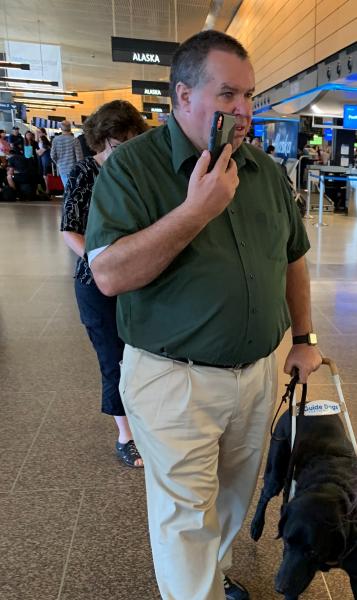
Larry’s Experience
Holding the system in his hands so we can see the screen, Larry connects to a live agent who can view what’s in front of him through the phone’s forward-facing camera. Typically, he uses a cell phone chest harness and earbuds so his hands are free to navigate and he can hear the agent better within the terminal. As he walks, the trained agent provides detailed instructions on what’s ahead and how to get to the gate.
Watkinson stops in front of the flight information board and holds the phone so the operator can read the departures board and determine which gate to go to. Huey is a big help when Larry gets to his destination, but hasn’t quite learned how to read the departures board. They walk quickly through the crowded terminal, sidestepping other travelers who stop suddenly in front of him and navigating around obstacles like garbage cans and pillars. When Larry gets to his destination, the Aira agent can also provide other services like ordering a rideshare vehicle and riding along to make sure he gets where he needs to go.
Larry emphasizes that every traveler has a different experience and that his journey is not representative of all travelers with vision impairment. With that in mind, here are a few of his tips and tricks for navigating SEA and other airports:
General Travel Tips
1. Research the layout of the airport in advance.
- How many gates are there in each concourse?
- Is there a train?
- What kind of restaurants are available and what do you want to eat?
- What kind of assistive devices and technology exist?
- Where are the relief areas for service dogs?
2. Mark your luggage with high contrast and bright materials (like fluorescent masking tape) so you can easily spot it.
3. For help at the airport, contact the appropriate party several days in advance:
- SEA handles the parking facilities
- Each airline is responsible for providing assistance from their ticketing counter to the gate. Contact your airline to request assistance between the ticketing counter and the gate, for help boarding a plane, specific seat assignments, medication storage, or dietary needs
4. Contact TSA Cares about 72 hours before you are traveling to help prepare for airport screening procedures. TSA can also provide an escort through the checkpoint. For help, ask for a passenger support specialist at:
5. Travelers with low vision can use a magnifying app on their phone to read signs and arrivals and departures boards.
6. If you are traveling through security with a service dog, leave the harness on. The harness will beep if there is metal, which will require a pat down of the dog from a TSA employee.
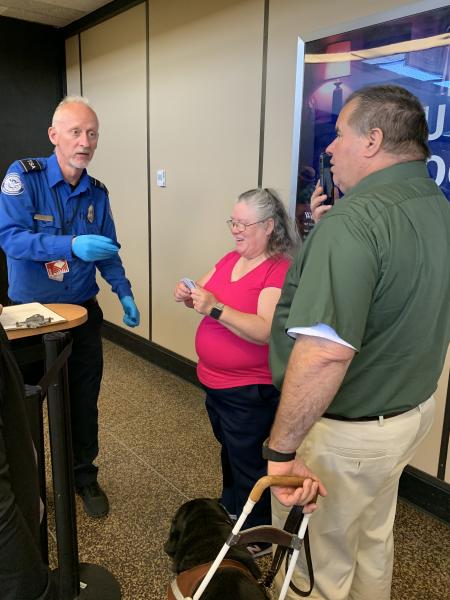
Tips for using Aira
- Download the Aira app before you get to the airport.
- Cell phone access in the terminal can be spotty; switch to Sea-Tac Airport free Wi-Fi for less video lag and more continuous coverage.
- Aira can be used with assistive smart glasses (which are optional); or you can use it with your cell phone and the forward-facing camera and the app.
- The terminal can be a loud environment; use headphones so you can hear the attendant on the phone more easily.
Accessibility at SEA
The Port of Seattle is committed to becoming the most accessible airport in the U.S. We are making improvements to welcome all passengers to the airport, even going beyond the Americans with Disabilities Act (ADA) requirements where we can.
Learn more about accessibility at SEA and new initiatives to make the airport more accessible.

